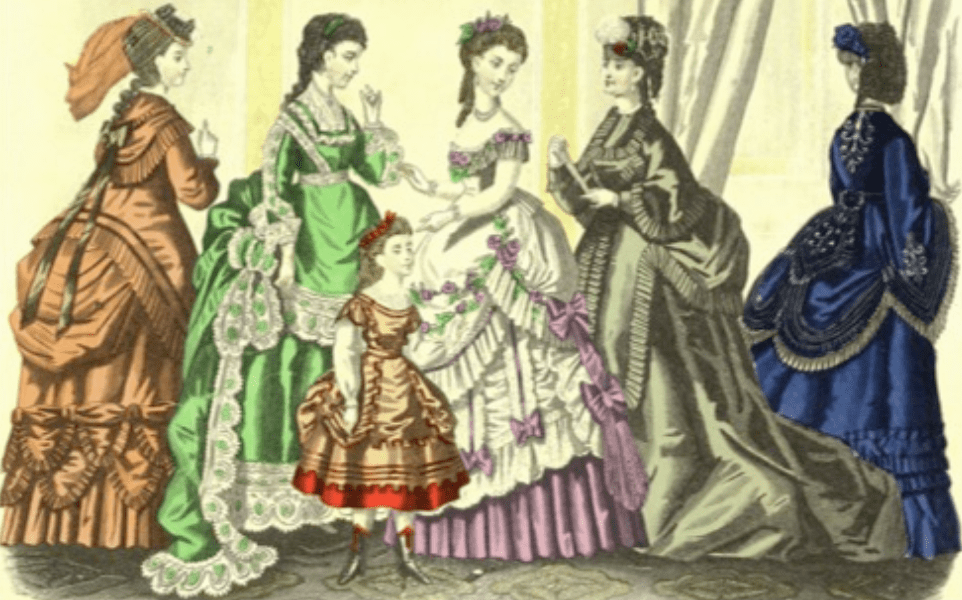
In 1860, skirts were so wide that fashionably dressed women could no longer fit through doorways. (Photo Credit: Wikpedia)
Why is the study of historical costume important? For designers it’s a source of inspiration, in fact some often name their collections based on a particular period in history. You only have to look at designers such as Yves Saint Laurent whose Beat collection for Christian Dior in 1960 was inspired by the existentialists of Paris’s bohemian Left Bank. Ralph Lauren has based many of his collections on historical references. In 2018 he said “I loved East Coast preppiness, the utility of the cowboy’s worn jeans, American folk art, the glamour of Hollywood, and the rich heritage of Native American craftsmanship.” And of course Alexander McQueen, the master of fashion history, with his collections: Highland Rape in 1995 that focused on English violence towards Scotland; his Joan collection in 1998 inspired by French folk heroine Joan of Arc and many others. Here’s a full list of his past collections.
For designers, the study of fashion history is mandatory. It is not only a source of inspiration, but it chronicles the social status, gender roles, and cultural practices of a particular time and place.
Let’s take a look at some of the most ridiculous fashion, some hits and some misses, and how fashion continues to challenge the status quo.
FASHION’S WIDE LOAD
A Pannier dress by an unknown designer, ca. 1750, at The Metropolitan Museum of Art. (Photo Credit: The MET)
Pannier dresses, popular in the 18th century, were so wide that women often found themselves stuck in doorways. These voluminous skirts required careful navigation and considerable space abut showcased the wearer’s status and the extravagance of the period. One of the most asked questions is how did women use the toilet when a wearing a pannier, hoop, bustle and/or caged skirt? The answer: They wore split-crotch drawers and therefore never had to pull them down as they used a commode and chamber pot. They would simply lift up the skirt, hoop or crinoline, and sit down either at the front or the back of the chair/commode, or they would place one foot on the chair while holding the chamber pot. The split-crotch drawers make it easy to do the rest. For a ‘not at all indecent’ video of the toileting process, click here.
FRENCH NOBLEWOMEN’S EXTRAVAGANCE
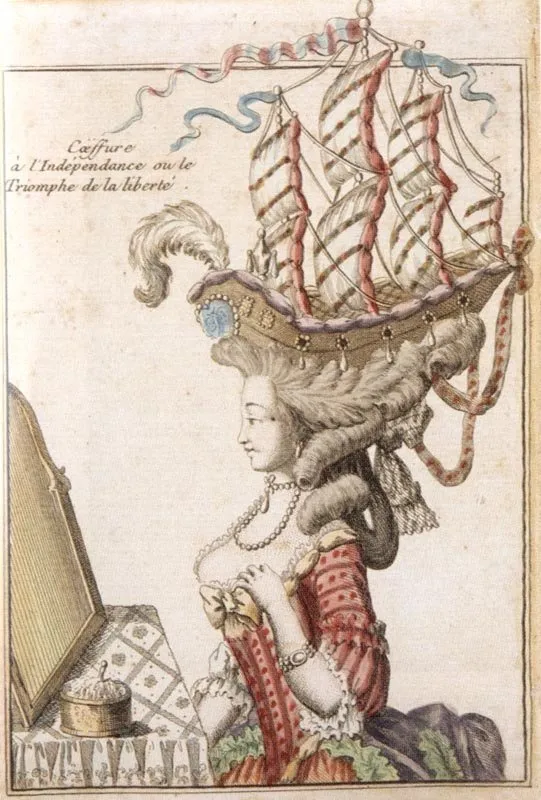
One of Marie Antoinette’s Most Epic Hairstyles. (Photo Credit: Huffington Post)
French noblewomen in the 18th century took hairstyling to new heights—literally. Inspired by naval victories, their elaborate coiffures often included miniature ships, complete with sails and rigging, perched atop their heads. Some of the most extravagant millinery designs would follow, such as the high-heeled Schiaparelli shoe hat, created in 1937 in collaboration with Salvador Dalí and Philip Treacy’s outstanding and outlandish creations. Click here to see some of Treacy’s masterpieces.
FASHION DOLLS
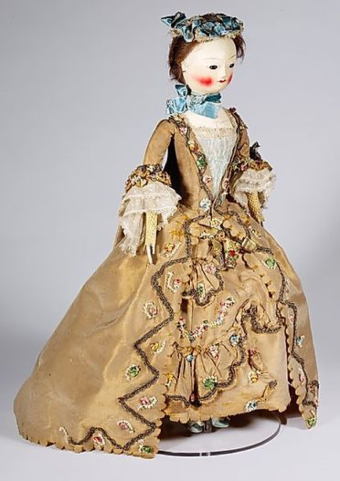
Fashion doll with accessories, c1755-60. (Photo Credit: Victoria and Albert Museum, London)
In the 15th century, fashion designers showcased their creations on little dolls instead of live models. These miniature clothes mannequins were sent to clients, offering a glimpse of the latest trends from which they would order. Designers back then were definitely more sustainability-minded compared to today’s practice of creating, fabricating and constructing hundreds of samples, several times a year, all full scale.
VICTORIAN BOYS IN DRESSES
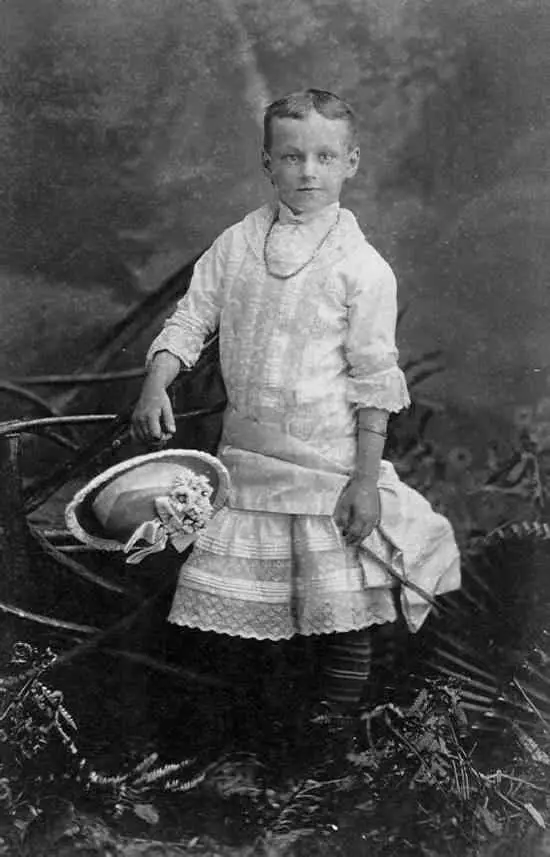
Victorian boys wore dresses until they were 4 to 5 years old. (Photo Credit: Facebook the vintage everyday)
In Victorian times, it was customary for young boys to wear dresses until they were about four or five years old. This practice made diaper changes easier and was a social norm of the era. However, the trend went out of fashion by the 1920s. Although Egyptian, Greek and Roman men wore togas and Scottish men still wear kilts, the concept of men wearing skirts and dresses didn’t pick up steam until 1990 when Jean Paul Gaultier designed the man-skirt. In 2023, Harry Styles became the first man to wear a dress on the cover Vogue magazine.
THE RISE OF WOMEN’S SHORTS
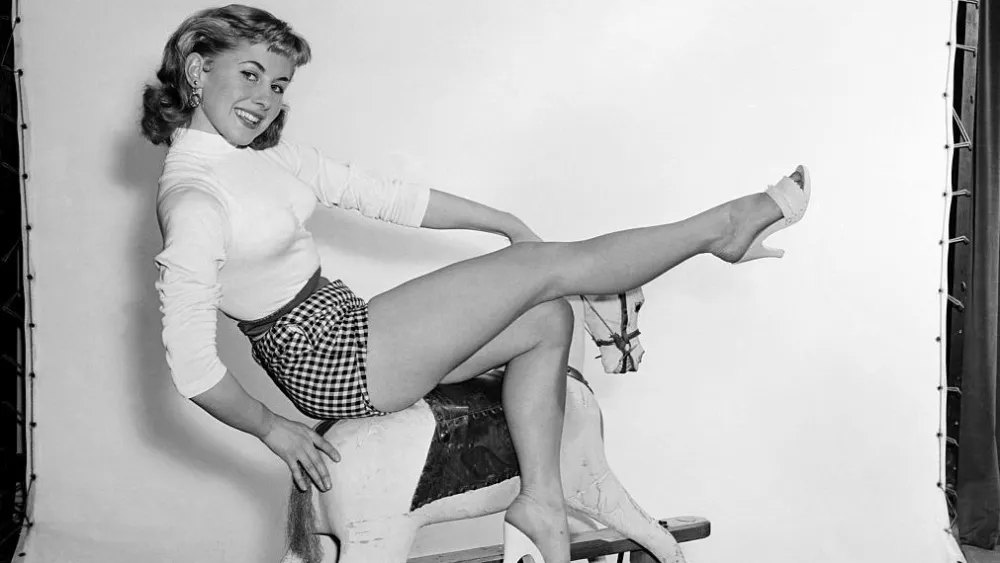
A model wearing shorts in 1954. (Photo Credit: Getty Images)
It wasn’t until after World War II that it became socially acceptable for women to wear shorts in public. The war brought about significant changes in women’s fashion, as practicality and comfort took precedence over pre-war norms. Today, women’s shorts have gotten even shorter and include names such as hot pants, short shorts, booty shorts, high cut shorts and even buttocks-exposing shorts, in an attempt to challenge societal norms.
THE BIRTH OF THE SHOULDER BAG
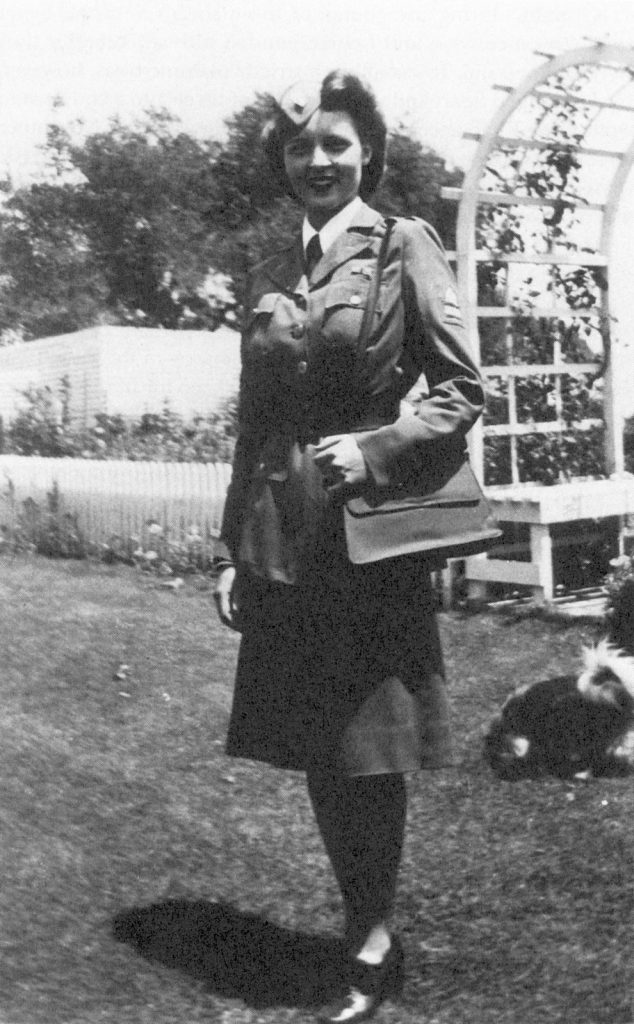
Betty White in her American Women’s Voluntary Services uniform. (Photo Credit: Betty White Ludden Trust)
Shoulder bags for women first appeared during World War II as part of service uniforms. Practical and functional, these bags soon became a staple in women’s fashion, blending utility with style. Fun fact: Did you know that the original Hermès Bag Birkin had a shoulder strap but was later removed for all future Birkin Hermès bags? But in 2023, with a surge of younger consumers who favor hands-free handbags taking over the luxury market, Hermès released the Crossbody Birkin.
Visit our social media channels to add your comments on fashion history and other topics. We’d love to hear from you:
Instagram: @uoffashion
Facebook: University of Fashion
-------------------------------------
By: Francesca Sterlacci
Title: Part 3- Fashion History Fun Facts
Sourced From: www.universityoffashion.com/blog/part-3-fashion-history-fun-facts/
Published Date: Sat, 02 Nov 2024 23:04:48 +0000
Read More
 FestivalsMusicNew ReleasesArtistsFashion & ClothingVideosPrivacy PolicyTerms And Conditions
FestivalsMusicNew ReleasesArtistsFashion & ClothingVideosPrivacy PolicyTerms And Conditions
